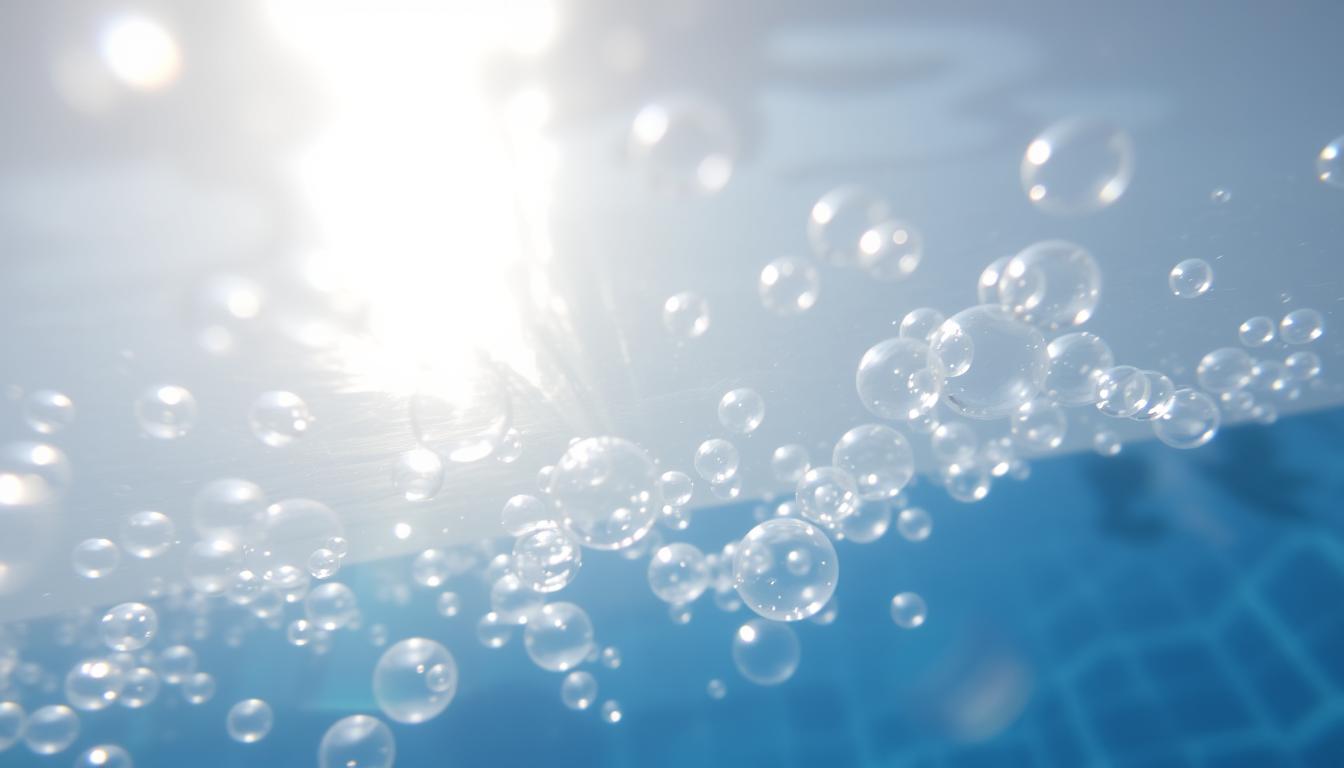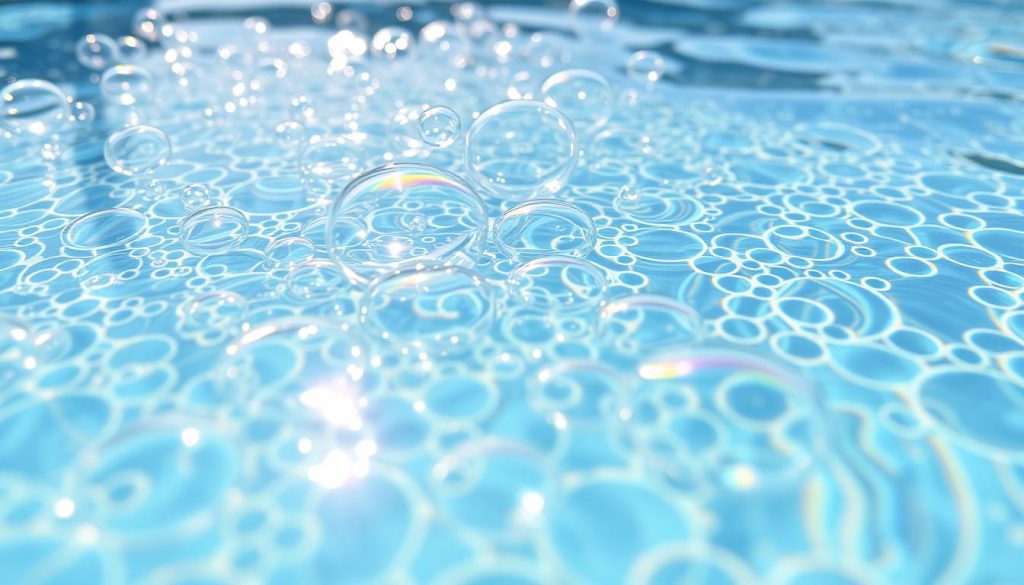
Water evaporation from a swimming pool can waste up to 100 liters daily. Pool covers are vital to prevent water loss and cut maintenance costs. Solar pool covers, or blankets, are great for fighting evaporation.
These lightweight barriers have small air bubbles with multiple functions. They keep the blanket afloat and transfer solar heat into the water. They also insulate the surface against heat loss on cool nights.
Pool covers stop heat loss and keep water warm day and night. They allow comfortable swimming even in winter when used with heating systems. By reducing evaporation, covers save on water and maintenance costs.
The air bubbles on pool covers are key to their effectiveness. Knowing how to place these bubbles is crucial for getting the most benefits.
Understanding Pool Cover Bubbles
Pool covers offer many benefits for pool owners. They keep heat in, reduce water loss, and stop debris. The bubbles on these covers are a key feature.
These bubbles play a crucial role in how the cover works. They’re not just for looks, but serve an important purpose.

Why Pool Covers Have Bubbles
The bubbles create an insulating layer between the pool water and outside air. They trap air, which helps keep heat in the pool. This is especially helpful during cool nights.
The bubble design also keeps the cover floating on the water. This ensures the pool stays fully covered. Full coverage is key for keeping heat in and reducing water loss.
Benefits of Bubbles on Pool Covers
The bubbles on pool covers offer many benefits. They make these covers a great investment for pool owners.
- Heat Retention: The bubbles trap solar heat and transfer it to the water. This can raise pool temperature by 10-15 degrees in just three sunny days.
- Evaporation Reduction: Bubbles help cut water loss by up to 95%. This saves money on water and chemicals.
- Debris Prevention: The cover’s solid layer blocks dust, dirt, and leaves. This keeps the pool cleaner and reduces filter cleaning.
| Benefit | Impact |
|---|---|
| Heat Retention | Increases water temperature by 10-15°F |
| Evaporation Reduction | Saves up to 95% on water loss and 30-60% on chemical consumption |
| Debris Prevention | Reduces cleaning time and filter maintenance |
A solar reel can store the cover easily. It’s pricey, but makes removing and applying the cover simple.
The bubbles on pool covers are crucial to their function. They help keep pools warm, clean, and efficient. Understanding these benefits can help you choose the right cover for your pool.
Proper Placement of Pool Cover Bubbles
Pool cover bubble placement is crucial for effectiveness and longevity. Bubbles should face down for best results. Let’s explore why this matters and what happens if done incorrectly.
Why Bubbles Should Face Down
Solar pool blankets work best with bubbles facing down towards the water. This traps heat and prevents it from escaping. The cover absorbs solar energy and transfers it to the pool water.
Depending on thickness, covers can increase water temperature by up to 18ºF. They also reduce water and chemical evaporation, saving pool owners money.
| Solar Cover Thickness | Temperature Increase | Warranty Period |
|---|---|---|
| 8 mil | Up to 10ºF | 3-year limited warranty |
| 12 mil | Up to 15ºF | 7-year warranty |
| 16 mil | Up to 18ºF | 8-year warranty |
Consequences of Placing Bubbles Up
Placing bubbles up can lead to issues that harm the cover’s performance. Direct sunlight and UV rays can cause bubbles to deteriorate and peel away.
This damage reduces the cover’s ability to retain heat and minimize evaporation. It also shortens its lifespan, requiring more frequent replacements.
Bubbles facing up can trap air and cause the cover to overheat. This leads to premature wear and tear, reducing overall lifespan.
Solar Blankets stop 5-times more evaporative heat loss compared to Liquid Solar Covers and Solar Sun Rings.
Always place bubbles facing down into the water during installation. This simple step maximizes benefits and minimizes risks of bubble deterioration.
Conclusion
Using a pool cover with bubbles facing down is key for optimal benefits. This placement improves heat transfer, reduces evaporation, and prevents debris. Proper installation and maintenance ensure long-lasting pool cover savings.
Protect your cover from direct sunlight when not in use. Maintain balanced pool chemistry. These steps guarantee energy savings and water conservation for years.
Choose the right color and thickness for your pool cover. This leads to a warmer, cleaner, and more cost-effective swimming experience. Invest in quality and follow best practices.
As pool owners, we must learn proper cover use and care. Sharing this knowledge promotes sustainable pool ownership. Let’s make the most of our pool covers, one bubble at a time.







